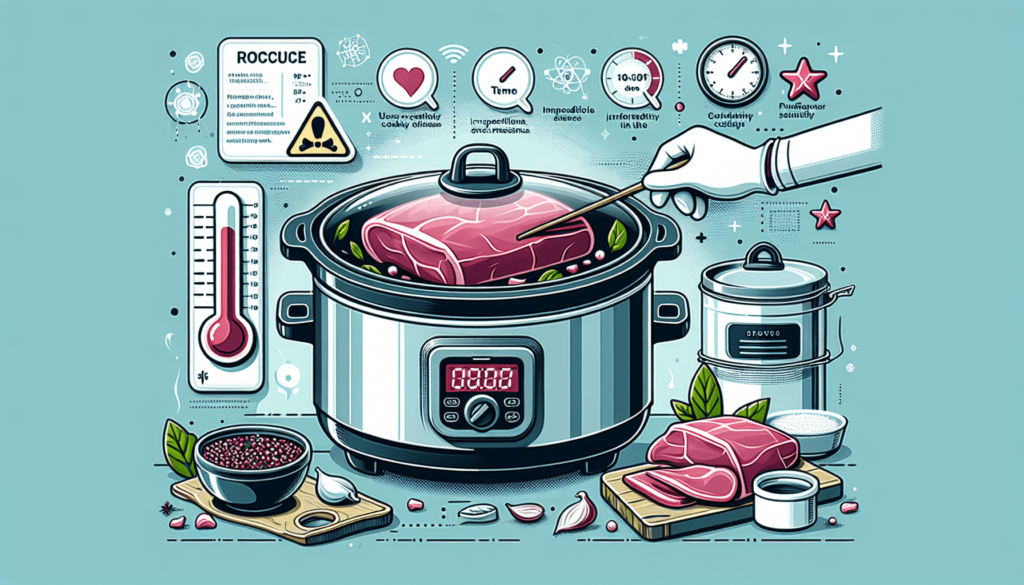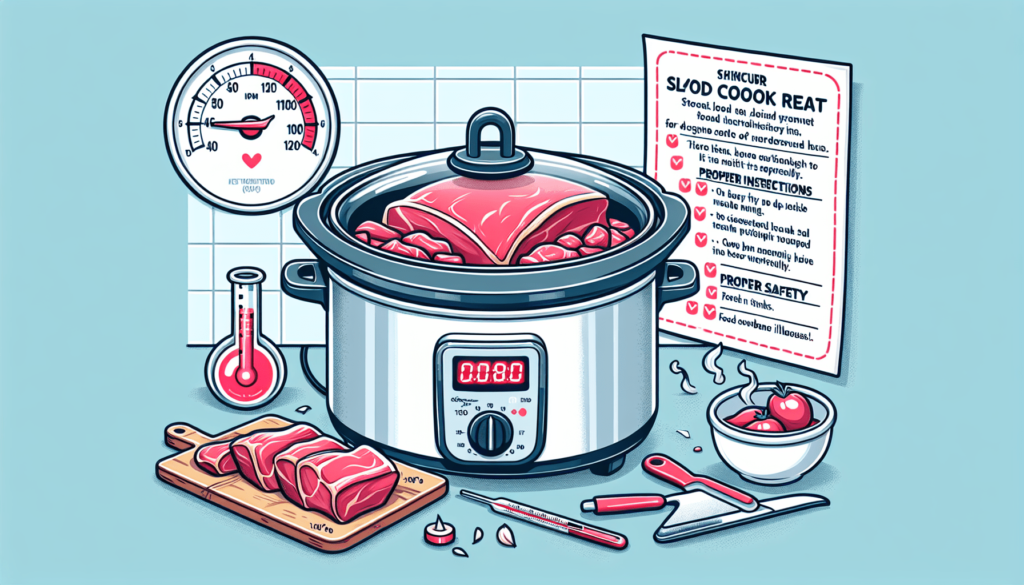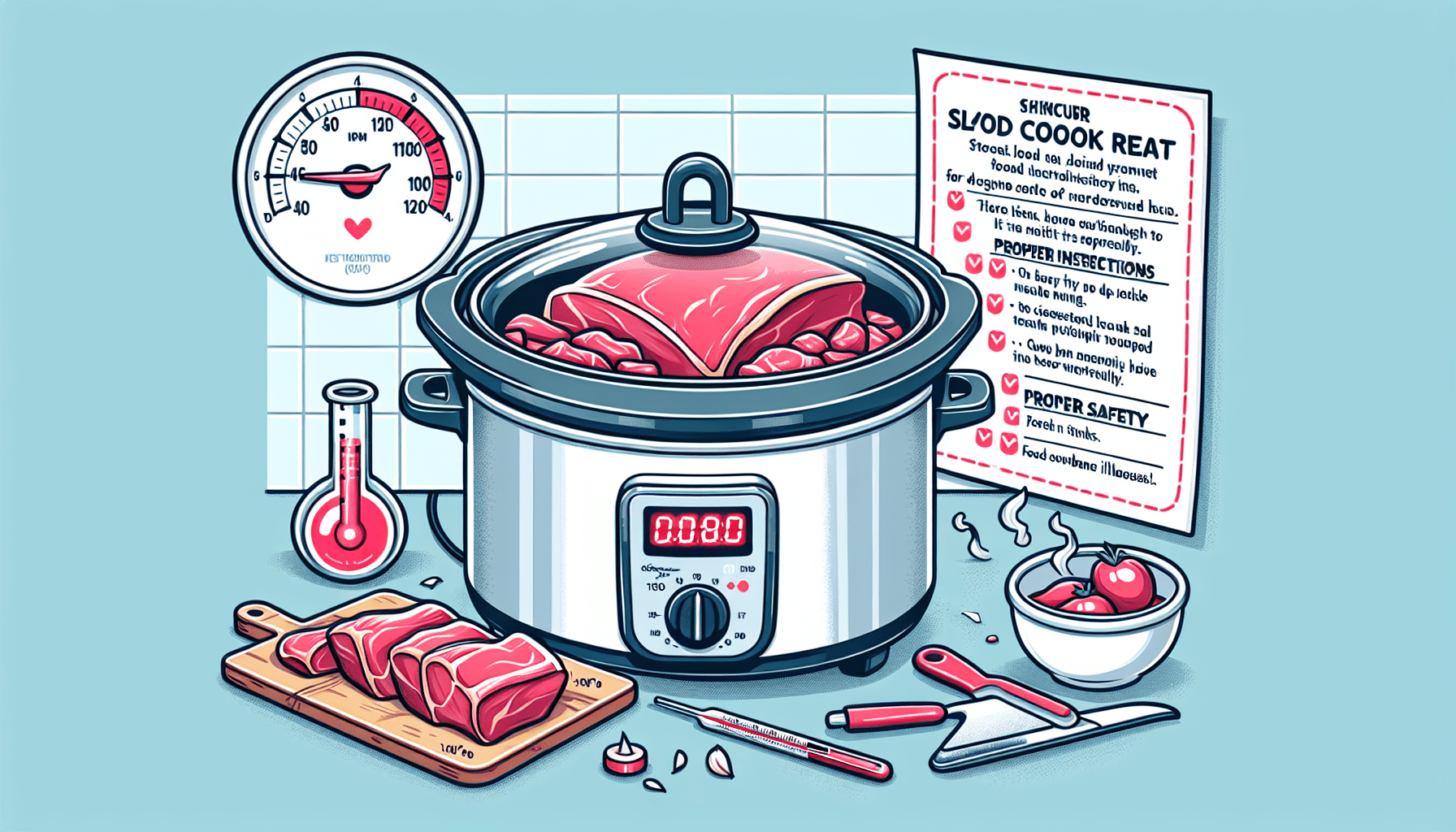Imagine coming home after a long day at work and being greeted by the mouthwatering aroma of a slow-cooked meal. The tantalizing smells wafting from your kitchen make your stomach rumble in anticipation. But as you prepare to indulge in the deliciousness that awaits, a nagging question pops into your head: is it safe to slow cook raw meat? In this article, we will address this common concern and provide you with the answers you need for a worry-free and scrumptious dining experience.
Understanding Slow Cooking
How Does Slow Cooking Work?
Slow cooking, also known as crockpot cooking, is a method of cooking that involves cooking food at low temperatures over an extended period of time. This is typically done in a slow cooker, which is a countertop appliance specifically designed for this purpose.
The slow cooker is equipped with a heating element that warms the food gradually and evenly. It works by using low heat to gradually break down the fibers in the meat and allow the flavors to meld together. The gentle cooking process ensures that the meat becomes tender and retains its moisture, resulting in succulent and flavorful dishes.
Advantages of Slow Cooking
There are numerous advantages to using the slow cooking method. Firstly, it allows for easy meal preparation. You can simply add all the ingredients to the slow cooker in the morning and come home to a delicious, ready-to-eat meal in the evening. This convenience makes slow cooking particularly popular for busy individuals and families.
Furthermore, slow cooking is a great way to maximize flavor. The low and slow cooking process helps to develop deep and complex flavors in dishes, especially in meat-based recipes. The extended cooking time allows the flavors to meld together, resulting in dishes that are rich and aromatic.
Another advantage of slow cooking is that it can make even the toughest cuts of meat tender and delicious. The long cooking time allows the connective tissues in the meat to break down, resulting in tender and melt-in-your-mouth textures. This not only makes the meat more enjoyable to eat but also more budget-friendly, as cheaper cuts of meat can be transformed into delicious meals.
Safety Concerns of Slow Cooking
While slow cooking offers many benefits, it is important to be aware of the safety concerns associated with this cooking method. It is especially crucial when cooking raw meat, as improperly cooked meat can lead to foodborne illnesses. To ensure safe slow cooking practices, it is essential to understand and address these concerns.
Cooking Raw Meat: Potential Risks
Bacterial Contamination
One of the primary risks when cooking raw meat, especially at low temperatures, is the potential for bacterial contamination. Raw meat, particularly chicken, beef, and pork, can harbor harmful bacteria such as Salmonella, Campylobacter, and E. coli. These bacteria can cause serious food poisoning if not properly cooked.
Toxin Formation
Another concern when cooking raw meat is the formation of toxins. Certain bacteria, such as Clostridium botulinum, can produce toxins that are heat resistant. When cooking at low temperatures, the heat may not be sufficient to destroy these toxins, leading to the risk of botulism.
Temperature Danger Zone
The temperature danger zone refers to the range of temperatures in which bacteria can grow rapidly, posing a risk of foodborne illness. The temperature danger zone is typically between 40°F (4°C) and 140°F (60°C). Slow cookers generally operate between 170°F (77°C) and 280°F (138°C), which falls outside of the danger zone. However, it is important to ensure that the food reaches a safe internal temperature to kill any bacteria present.

Safe Practices for Slow Cooking Raw Meat
To safely slow cook raw meat, it is important to follow these practices to minimize the risk of bacterial contamination and ensure that the meat is thoroughly cooked.
Choosing Quality Meat
Choosing high-quality meat is essential when cooking raw meat. Look for fresh meat that is properly labeled, and ensure that it is stored at the correct temperature before purchasing. Opt for reputable sources such as trusted butchers or reliable grocery stores to minimize the risk of contaminated meat.
Preparing the Meat Properly
Proper meat preparation is paramount to food safety. Before adding the meat to the slow cooker, it is crucial to handle it with clean hands and sanitize all utensils and surfaces that come into contact with raw meat. Additionally, trim any excess fat from the meat to reduce the risk of grease buildup in the slow cooker.
Using Correct Cooking Temperatures
To ensure that the meat is thoroughly cooked and any harmful bacteria are destroyed, it is important to use correct cooking temperatures. Slow cookers should be set to the appropriate heat setting according to the recipe. Most recipes recommend cooking meat until it reaches an internal temperature of 165°F (74°C) to ensure safety.
Monitoring Cook Time
Properly monitoring the cook time is essential to slow cooking raw meat safely. It is important to follow the recommended cooking times provided in recipes and ensure that the meat reaches a safe internal temperature before consuming. Using a meat thermometer can help accurately measure the temperature and determine when the meat is fully cooked.
Storing Leftovers Safely
After enjoying a delicious slow-cooked meal, it is important to store any leftovers safely to prevent foodborne illnesses. Allow the cooked meat to cool to room temperature before transferring it to an airtight container and refrigerating it promptly. Leftovers should be consumed within three to four days or frozen for longer storage.
Tips and Precautions
To further enhance the safety of slow cooking raw meat, there are additional tips and precautions that you can follow.
Thawing Meat
When slow cooking raw meat, it is important to thaw it properly beforehand. Avoid thawing meat at room temperature, as this can promote bacterial growth. The recommended methods for thawing meat include thawing it in the refrigerator, using a microwave, or using the cold-water method, where meat is sealed in a leak-proof bag and submerged in cold water.
Marinating Meat
Marinating meat before slow cooking not only adds flavor but also helps to tenderize it. However, it is crucial to marinate meat in the refrigerator to prevent bacterial growth. Avoid reusing marinades that come into contact with raw meat, as they can potentially transfer bacteria to cooked food.
Using a Meat Thermometer
A meat thermometer is a valuable tool to ensure that meat is cooked to a safe internal temperature. Insert the thermometer into the thickest part of the meat without touching bone or fat. This will help determine if the meat has reached the recommended safe temperature.
Avoiding Cross-Contamination
Cross-contamination occurs when harmful bacteria from raw meat come into contact with ready-to-eat foods or surfaces that will touch the food without proper cleaning. To prevent cross-contamination, it is important to thoroughly clean and sanitize utensils, cutting boards, and countertops after they come into contact with raw meat.
Ensuring Proper Ventilation
It is important to ensure proper ventilation when slow cooking raw meat. The steam released during cooking can cause condensation and promote bacterial growth if not properly ventilated. Check that the lid of the slow cooker fits tightly and avoid opening it unnecessarily during the cooking process to maintain a safe cooking environment.
By following these practices, you can safely slow cook raw meat and enjoy delicious and flavorful meals with peace of mind. Take the time to properly handle, cook, and store your ingredients, and you’ll be rewarded with meals that are both safe and satisfying. Bon appétit!

